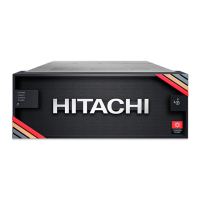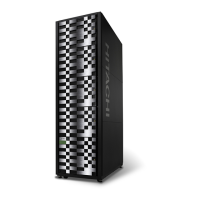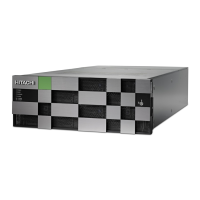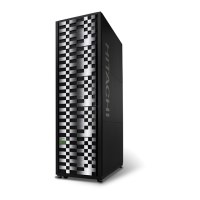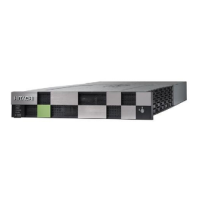9. Click OK.
The IP address and community you entered are changed in the Registered Sending
Trap Settings table.
10. Click Finish.
11. In the Conrm window, enter a name for the task, conrm the settings, and then
click Apply.
Changing trap notification for SNMP v3
This topic describes the procedure to change the IP addresses and users for SNMP v3
trap notication.
Before you begin
You must have the Storage Administrator (Initial Conguration) role to perform this task.
For more information, see the System Administrator Guide.
Procedure
1. Display the Device Manager - Storage Navigator main window.
2. From the Settings menu, select Environmental Setting > Edit Alert Settings.
3. Select the SNMP tab.
4. Under SNMP Agent, click Enable.
5. Under SNMP Version, select v3.
6. Under Registered Sending Trap Settings, select the trap setting you want to
change, and then click Change.
The Change Sending Trap Setting window opens.
7. If you want to make changes under Send Trap to, select the Send Trap to check
box, select IPv4 or IPv6, and then enter an IP address.
Note: Any IP address that has all values set to zero (0) cannot be
specied for IPv4 and IPv6. The IPv6 address is specied by entering 8
hexadecimal numbers that are separated by colons (:) using a maximum
of 4 digits from zero (0) to FFFF inclusive. The default form of the IPv6
address can be specied.
8. If you want to change the User Name, select the User Name check box, and then
enter a user name.
You can enter up to 32 alphanumeric characters. The following special characters
are not allowed: ", \, ;, :, ,, *, ?, <, >, |, /, ^, &, and %.
Do not use a space either at the beginning or the end.
9. If you want to make changes under Authentication, select the Authentication
check box, and then select whether to Enable or Disable authentication.
If you select Enable, perform the following steps:
a. To change the Protocol, select the Protocol check box, and then select an
authentication type.
Changing trap
notication for SNMP v3
Chapter 4: Setting SNMP
Hitachi Alert Notication Guide for VSP5000 Series 28
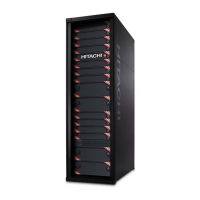
